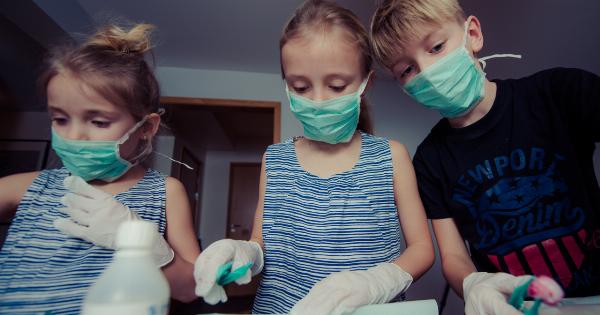First aid is an essential skill that everyone should possess. It involves providing immediate care to individuals who have been injured or are experiencing a medical emergency.
Over the years, first aid techniques and protocols have evolved to ensure more effective and efficient care. One controversial topic in modern first aid is the relevance of the “Kiss of Life”, also known as rescue breathing or mouth-to-mouth resuscitation.
The Kiss of Life Technique
The Kiss of Life technique is a method of artificial respiration that involves providing breaths into the mouth of a non-breathing individual in order to oxygenate their lungs.
It is commonly associated with cardiopulmonary resuscitation (CPR) and is traditionally taught as part of basic first aid courses.
The Importance of Oxygenation
Oxygenation of the body is crucial for the survival of an individual in a life-threatening situation.
When a person’s breathing has stopped or is inadequate, providing rescue breaths can supply oxygen to the lungs and keep vital organs functioning. This is especially important during cardiac arrest or suffocation incidents.
Effectiveness of the Kiss of Life
While the Kiss of Life technique has been a staple in first aid education for decades, its effectiveness has been questioned in recent years.
Several studies have suggested that chest compressions alone, without rescue breaths, can maintain adequate circulation in cardiac arrest cases. The American Heart Association revised their guidelines in 2010 to recommend chest compressions as the primary step in CPR, with rescue breaths being optional.
Hands-Only CPR
Hands-Only CPR is an approach that focuses solely on chest compressions without the use of rescue breaths. This technique is easier to learn and remember, and can be performed by untrained individuals.
It eliminates the need for mouth-to-mouth contact, which some people may find uncomfortable or unhygienic.
The Limitations of the Kiss of Life
While the Kiss of Life has its benefits, it also has limitations that make it less practical in certain situations.
In cases where the rescuer is not confident in their ability to perform rescue breaths effectively, or when there are concerns about infection transmission or hygiene, the technique may be avoided or delayed. In such situations, immediate chest compressions can still be initiated until professional medical help arrives.
Modern Alternatives
The advancement of technology and medical devices has provided modern alternatives to the Kiss of Life technique.
Automatic external defibrillators (AEDs) have become more widely available and are designed to deliver electric shocks to the heart in cases of cardiac arrest. These devices eliminate the need for rescue breaths altogether, with the focus solely on providing timely defibrillation.
Considering the Context
Whether the Kiss of Life is considered relevant in modern first aid depends on the context in which it is being applied.
In some emergency situations where immediate medical help is not readily available, rescue breaths may still play a vital role in saving a life. However, in scenarios where trained medical professionals are nearby or when AEDs are accessible, the emphasis may shift towards the use of chest compressions and defibrillation.
Training and Education
First aid training plays a crucial role in equipping individuals with the skills and knowledge necessary to respond effectively to emergencies.
Training providers must stay up-to-date with the latest recommendations from organizations like the American Heart Association and continuously evaluate the relevance of techniques such as the Kiss of Life in modern first aid.
Conclusion
While the Kiss of Life technique has been a long-standing component of first aid education, its relevance in modern first aid is subject to ongoing debate.
The effectiveness of chest compressions alone, the rise of Hands-Only CPR, and the availability of AEDs have all contributed to questioning the necessity of rescue breaths in certain situations. The context of the emergency and the availability of trained professionals or medical devices should be considered when deciding whether to utilize the Kiss of Life or alternative techniques.





























